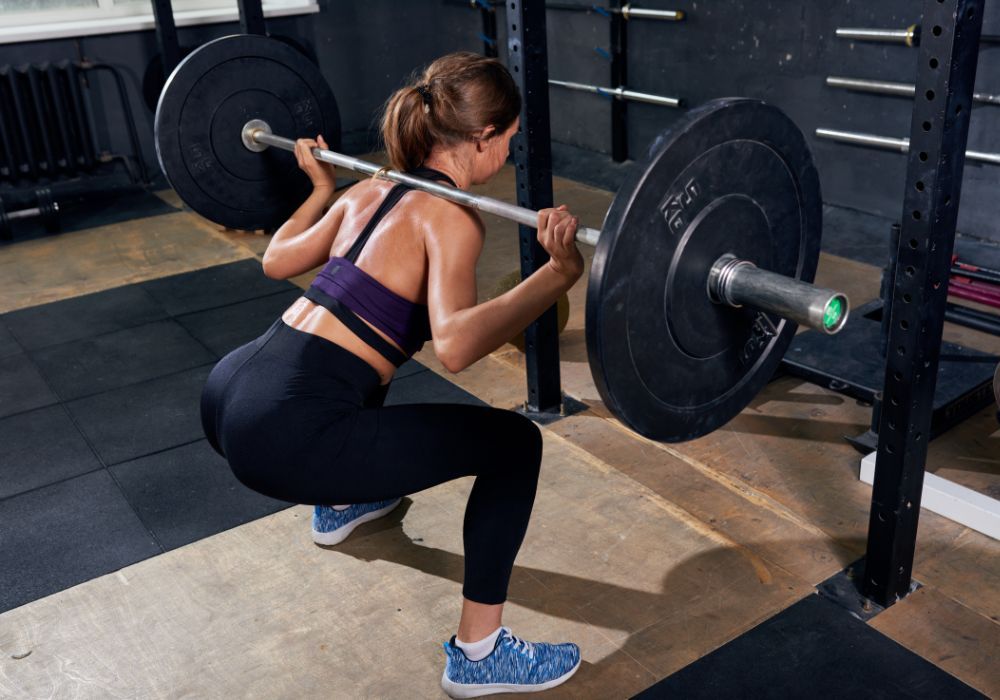 SIGN IN
SIGN IN
Why is everyone talking about 'Full Range of Motion?'

In our day-to-day lives, we often fall into patterns of limited movement. Whether we’re sitting at desks, driving, or lounging on the sofa, most of us rarely use our joints through their full range of motion.
How often to you lift your leg higher than hip height? Or rotate your arm all the way around? You might be wondering why would you need to if you’re not doing it during the day-to-day.
As the saying goes, "If you don’t use it, you lose it." Your joints have synovial fluid in them that keeps them running smoothly. Like oil in a machine. Each time you move the joint, more synovial fluid is produced. Less use, less oil, less smooth.
This lack of movement can therefore lead to stiffness, weakness, and even injury. Imagine, that time that you do need to reach over to grab a book from the higher shelf and bam, there goes your shoulder.
So what does Full Range of Motion mean and why does everyone keep talking about it?
Full range of motion refers to the ability of a joint to move through its complete anatomical range, from full flexion to full extension, without pain or restriction. In key movements like squats, this means lowering your hips below parallel while maintaining alignment and stability. For press-ups, it involves lowering your chest fully to the ground and pressing back up to full arm extension. Similarly, in pull-ups, achieving full range means starting from a dead hang with straight arms and pulling yourself up until your chin clears the bar. Performing exercises this way ensures that muscles and joints are strengthened throughout their entire movement capacity, promoting better mobility and resilience.
What happens if we don’t use Full Range of Motion?
When exercises like squats, press-ups, and pull-ups are not performed through their full range of motion, it can lead to imbalances and weaknesses. Partial movements fail to engage muscles completely, leaving certain areas underdeveloped and prone to injury. For example, shallow squats don’t fully activate the glutes and hamstrings, which can lead to knee instability. Similarly, incomplete press-ups neglect the chest and shoulders, resulting in weaker pushing strength. In pull-ups, avoiding full extension reduces lat engagement, limiting back strength and mobility. Over time, these imbalances may cause compensatory patterns, joint stiffness, and reduced functional capacity, making daily movements and athletic performance more challenging.
Join us on Instagram for expert guidance
To understand how exactly different body areas need to be moved, we’re currently sharing a Full Range of Motion series on Instagram. These quick and practical reels feature exercises designed to target key joints, improve mobility, and build strength through their full range of motion. Whether new to mobility work or looking to deepen your practice, our series offers step-by-step guidance to get you moving confidently.
Follow us on Instagram for more tips and tricks like these!
In our day-to-day lives, we often fall into patterns of limited movement. Whether we’re sitting at desks, driving, or lounging on the sofa, most of us rarely use our joints through their full range of motion.
How often to you lift your leg higher than hip height? Or rotate your arm all the way around? You might be wondering why would you need to if you’re not doing it during the day-to-day.
As the saying goes, "If you don’t use it, you lose it." Your joints have synovial fluid in them that keeps them running smoothly. Like oil in a machine. Each time you move the joint, more synovial fluid is produced. Less use, less oil, less smooth.
This lack of movement can therefore lead to stiffness, weakness, and even injury. Imagine, that time that you do need to reach over to grab a book from the higher shelf and bam, there goes your shoulder.
So what does Full Range of Motion mean and why does everyone keep talking about it?
Full range of motion refers to the ability of a joint to move through its complete anatomical range, from full flexion to full extension, without pain or restriction. In key movements like squats, this means lowering your hips below parallel while maintaining alignment and stability. For press-ups, it involves lowering your chest fully to the ground and pressing back up to full arm extension. Similarly, in pull-ups, achieving full range means starting from a dead hang with straight arms and pulling yourself up until your chin clears the bar. Performing exercises this way ensures that muscles and joints are strengthened throughout their entire movement capacity, promoting better mobility and resilience.
What happens if we don’t use Full Range of Motion?
When exercises like squats, press-ups, and pull-ups are not performed through their full range of motion, it can lead to imbalances and weaknesses. Partial movements fail to engage muscles completely, leaving certain areas underdeveloped and prone to injury. For example, shallow squats don’t fully activate the glutes and hamstrings, which can lead to knee instability. Similarly, incomplete press-ups neglect the chest and shoulders, resulting in weaker pushing strength. In pull-ups, avoiding full extension reduces lat engagement, limiting back strength and mobility. Over time, these imbalances may cause compensatory patterns, joint stiffness, and reduced functional capacity, making daily movements and athletic performance more challenging.
Join us on Instagram for expert guidance
To understand how exactly different body areas need to be moved, we’re currently sharing a Full Range of Motion series on Instagram. These quick and practical reels feature exercises designed to target key joints, improve mobility, and build strength through their full range of motion. Whether new to mobility work or looking to deepen your practice, our series offers step-by-step guidance to get you moving confidently.
Follow us on Instagram for more tips and tricks like these!
